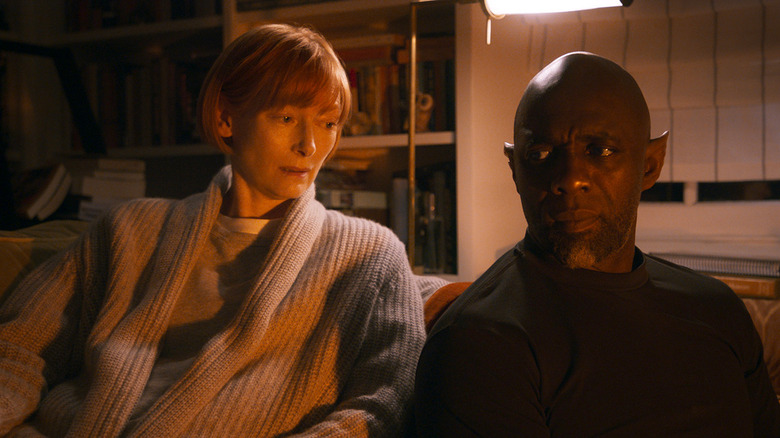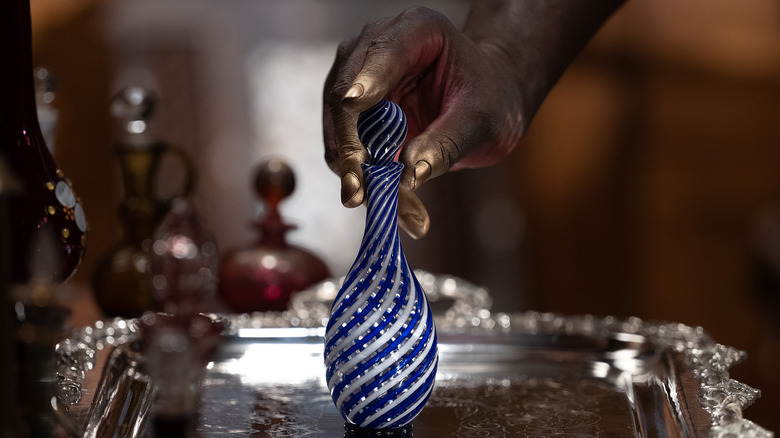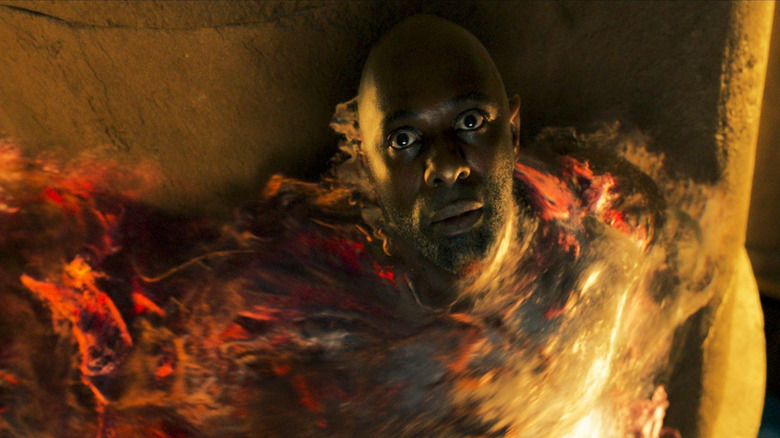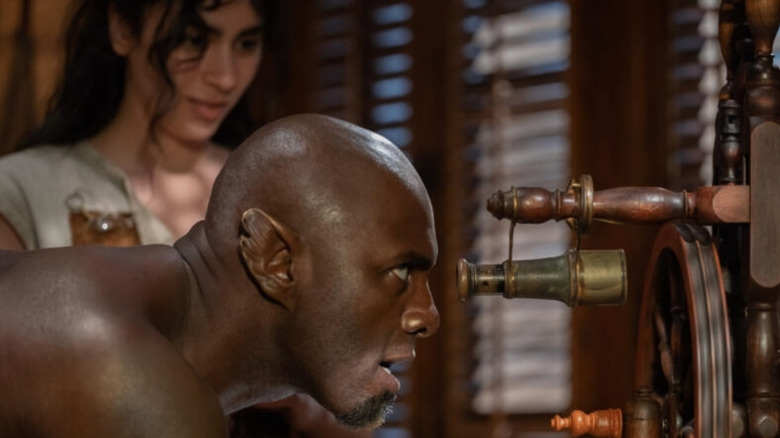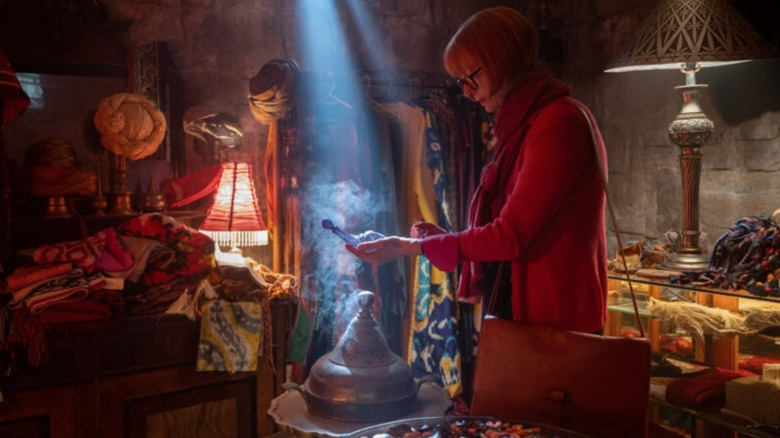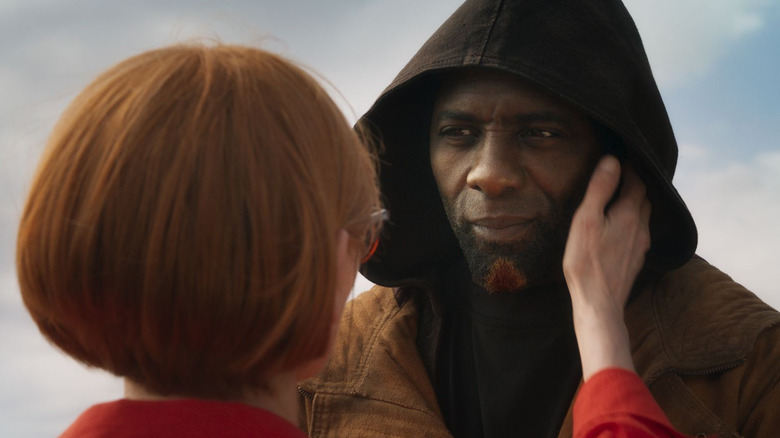Three Thousand Years Of Longing Spoiler Review: George Miller's Ode To Storytelling Mostly Shines In Complex Romance
No matter how they are told or which culture they originate from, stories are the very essence of human existence. Every group of people throughout history has lived off stories, mythology, and the like to progress their society. After all, what is the point of history if you do not keep track of and learn from it?
That is the idea at the core of "Three Thousand Years of Longing," George Miller's maximalist adaptation of A.S. Byatt's short story "The Djinn in the Nightingale's Eye." While it is fair to expect something as epic and intense as "Mad Max: Fury Road," that couldn't be further from what viewers receive with this film. "Three Thousand Years of Longing" is quieter and contemplative, opting to use its sprawling visuals sparingly to convey its grand ideas. A beautiful yet appropriately flawed ode to storytelling, Miller champions the resilience of humanity that can be traced back to these stories.
A modern-day fairytale
The central protagonists of this fairytale are Dr. Alithea Binnie (Tilda Swinton), an accomplished narratologist who studies the impact of stories on society, and an unnamed Djinn (Idris Elba), a Middle Eastern spirit that grants Alithea three wishes for setting him free from a bottle she purchased. Due to her expertise in storytelling and mythology, she is deeply unconvinced by his offer, arguing that encounters with Djinn always end in misfortune. Unfortunately for the Djinn, he needs whoever set him free to grant three wishes to prevent being sent into oblivion. To convince Alithea to make at least one wish, he tells her stories of three distinct encounters he's had with humankind spanning thousands of years. Three thousand, to be exact!
Perhaps the movie's biggest strength is these two central characters. Swinton and Elba have undeniable chemistry with each other; as soon as the Djinn forms inside Alithea's Istanbul hotel room, there is a magnetism on display that only grows with every story that the Djinn recounts. Their sexual tension is subtle yet still very much present. The looks they steal, their playful back and forths, and the ever-so-light grazes of their hands will make you swoon. It is a profoundly romantic movie in the same way that Mr. Darcy's hand stretch in 2005's "Pride and Prejudice" is romantic. The simmering tension between Swinton and Elba is subtle but also evident at the same time, making their eventual love for each other that much more satisfying.
Setting the scene
"Three Thousand Years of Longing" has a bit of a strange look to it, and it might not be obvious at first glance. The movements caught on camera look just a tad too fluid, its coloring is just a bit too bright, and the CGI isn't the most realistic. The scenes look like something you can typically find in your everyday life, but something feels off. If it were any other movie, one might think it's a sign of rushed work or a low budget.
However, all of these slight quirks in its overall look actually work in this context. Every scene, from the pristine white interiors of Alithea's hotel room to the hallways of the Topkapı Palace, looks like how it would appear in a dream. This also extends over to the CGI used throughout the movie; while it isn't as photorealistic as something like "Avatar: The Way of Water," it also looks appropriately uncanny while also never looking cheap.
A series of love stories
While his romance with Alithea is the primary one throughout "Three Thousand Years of Longing," it is not the first time the Djinn has been involved and subsequently trapped by a story of love and desire. He recounts the stories of the fabled Queen of Sheba (Aamito Lagum), a concubine named Gülten (Ece Yüksel), and a repressed genius named Zefir (Burcu Gölgedar). Sheba and Zefir were lovers of the Djinn that banished him into solitude, while Gülten's assistance of the spirit to find love is intrinsically connected to the history of the Ottoman Empire.
These stories are mostly well-written and paced in a dream-like manner. After all, these are fantastical stories, so why shouldn't they feel otherworldly? All three women at the core of these stories feel more independent than just being there for plot purposes, especially Zefir. Outside of Alithea and the Djinn, Zefir is the most intriguing character in the entire movie due to her mathematical smarts and a keen eye for innovation. When she eventually wishes to the Djinn in an argument they never met, it doesn't imply that she loses the knowledge or understanding he helps her gain, which was a refreshing detail to keep.
There are no perfect stories
While overall a highly compelling story, some aspects of the film don't exactly work as effectively. Perhaps the most obvious is that, despite its Turkish setting and numerous supporting actors, it certainly feels like a white director's interpretation of Arabian mythology. It doesn't feel nearly as offensive as other movies, but it still would have been nice to see these stories from this perspective. A conversation could also be had regarding its potential usage of racial tropes, such as the concept of the white savior (the Djinn wants Alithea to make her three wishes least he evaporate into oblivion), but I must admit these ideas should be explored in greater detail outside of this review.
However, what might be offensive to some is one minor plot point within the Ottoman Empire story. After the premature death of Gülten leaves him in invisible oblivion for centuries, the Djinn is set free when a mayor and concubine named Sugar Lump (Anna Adams) slips and falls on the tile secretly housing the spirit's bottle. Presented in slow-motion, the fall of a fat woman is depicted for laughs, as is the reluctant Sultan Ibrahim's (Jack Braddy) "fetish" for plus-size women. While not a significant part of the movie itself, it has the potential to leave a sour taste in the mouths of some viewers, especially for a movie about how united every human can be with the power of storytelling.
Still, the story prevails
The thing about stories is that no matter their subject matter, they can create emotions for all that hear them. It doesn't matter whether they illicit comfort or discomfort, desire or disgust, or any other type of feeling human beings can conjure. In the age of streaming services and social media, platforms that demand the full attention and demand of their user, the need for good stories is more important than ever. These types of stories can't be labeled as "content" or mass-produced, and no matter how messy they can be, they are critical if we want to ensure that humanity as a whole can remain united in even the worst of times.
With "Three Thousand Years of Longing," George Miller makes a bold proclamation for the survival of these stories. The film positions them as something that unifies and enriches society even in our darkest times (surprisingly, it does acknowledge the COVID-19 pandemic), which is completely right in that regard. They can make people fall in love with not only each other but the world and various cultures that inhabit it. After all, without stories, what is the point of our existence?
